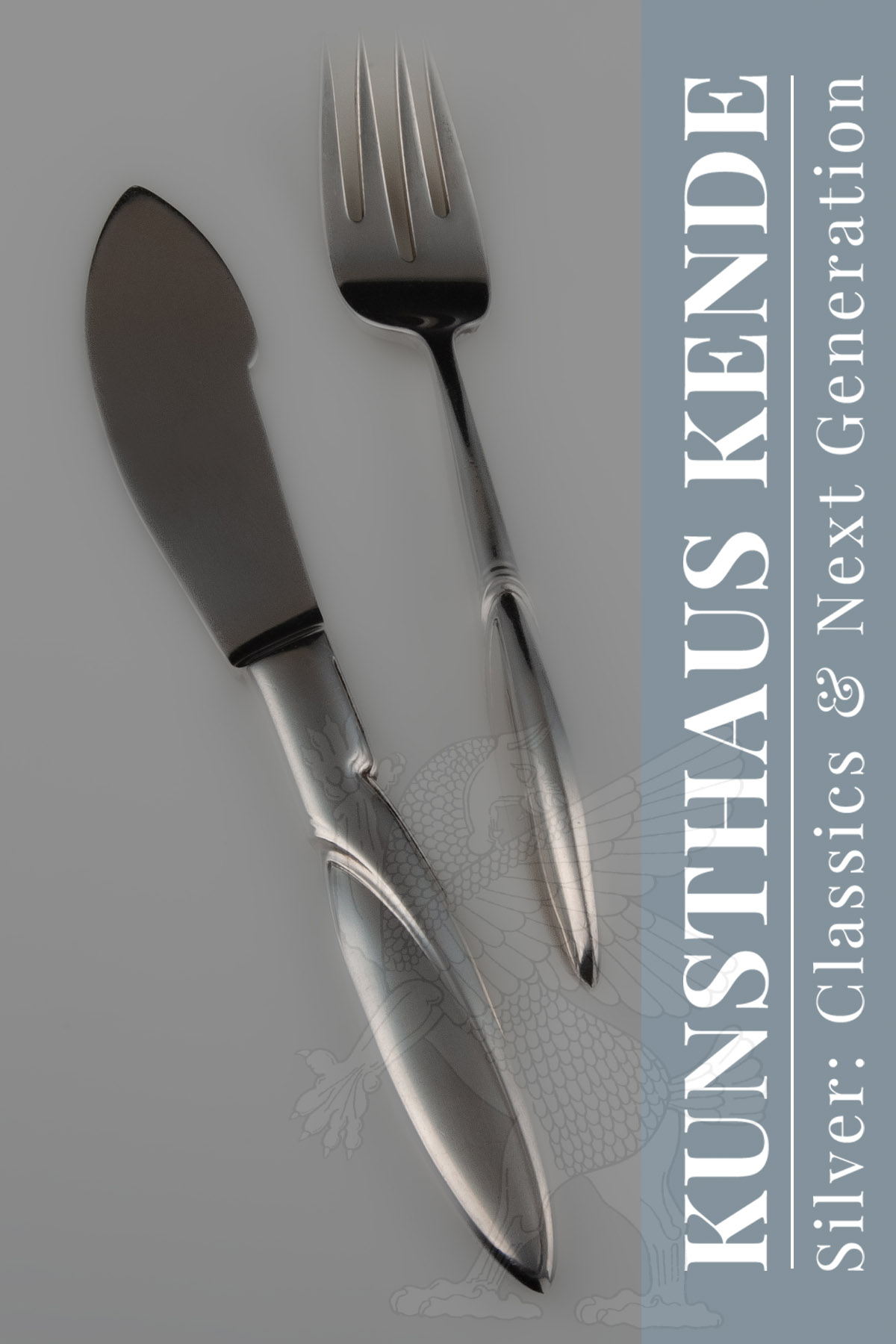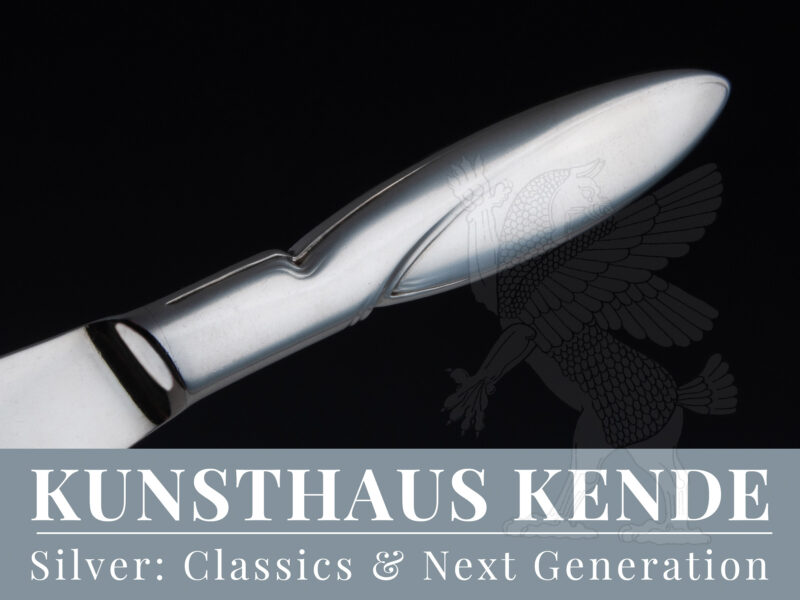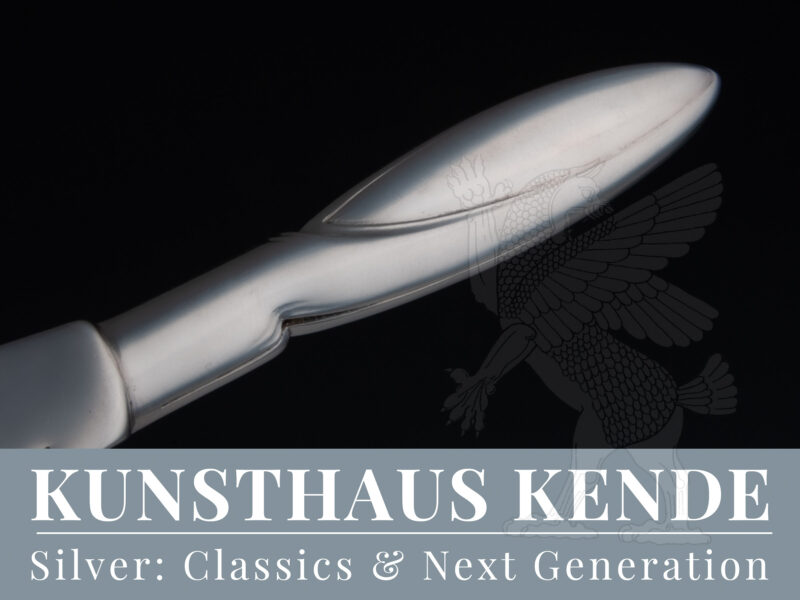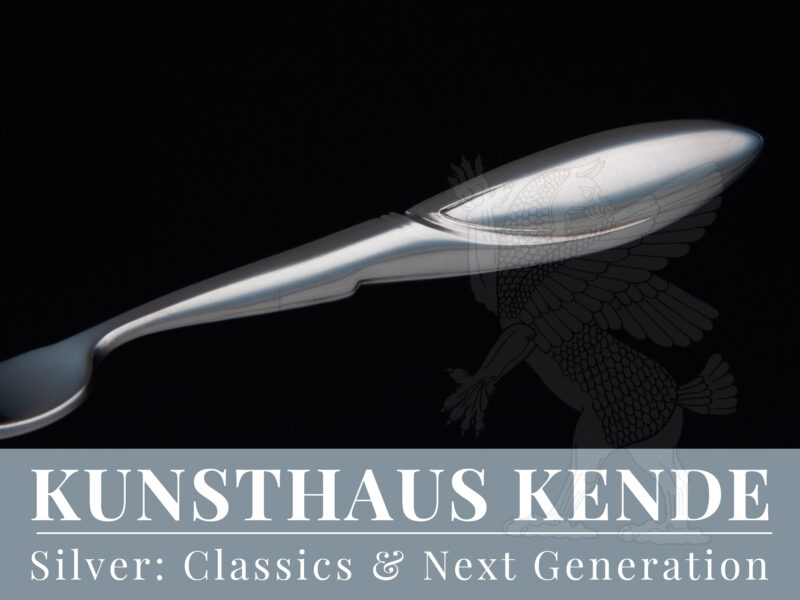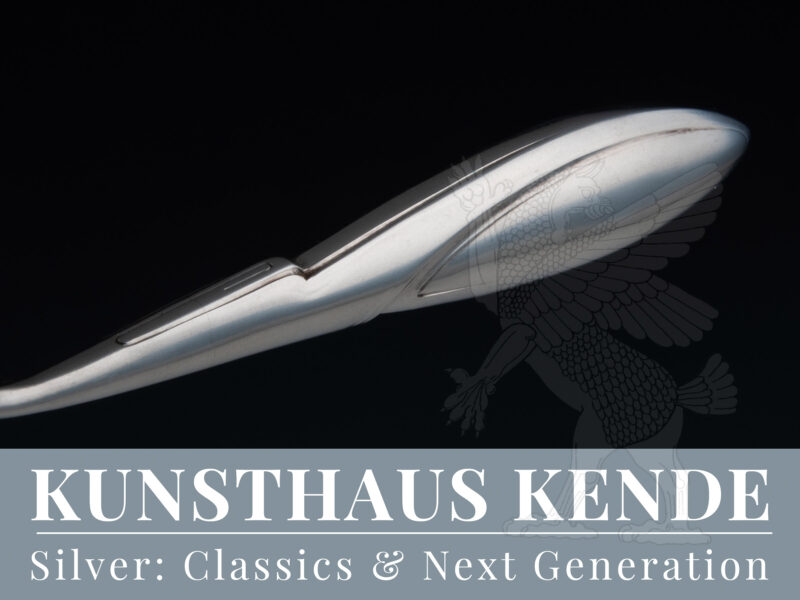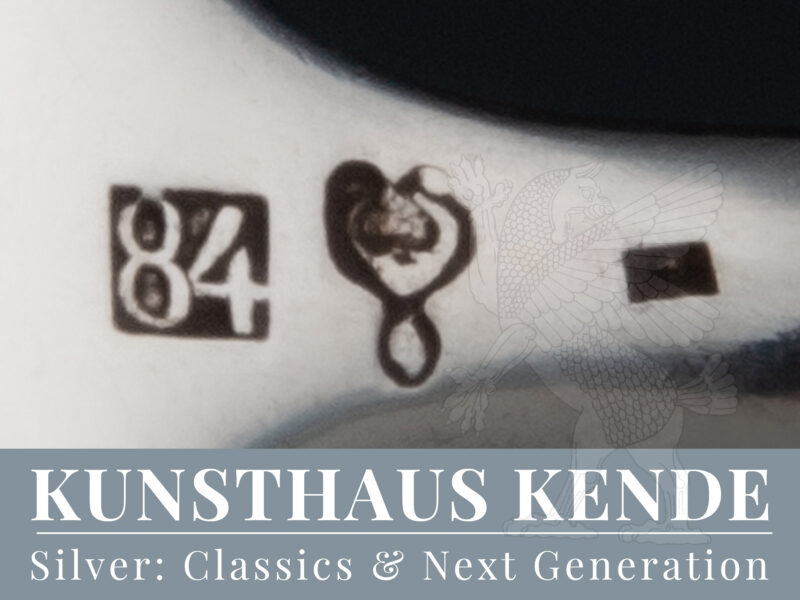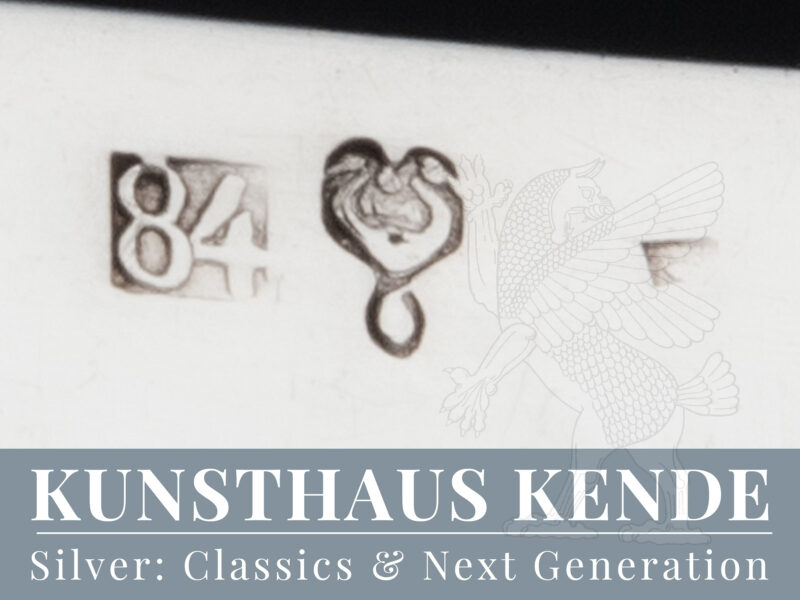Item number: 60193
Rare fish cutlery, silver, Bremen 1905/06,
designed by Henry van de Velde (1902), manufactured by Koch & Bergfeld
Finest linear Art Nouveau style, the handles worked three-dimensionally. The fish knife subtly canted at the joint of the blade. Very rare fish cutlery from of the pattern ‘Model I’ designed by Henry van de Velde for the wedding of Grand Duke Wilhelm Ernst and Caroline von Reuß.
Fish fork: 17.8 cm / 7.0″ length; 56.4 g / 1.81 oz
Fish knife: 20.0 cm / 7.87″ length; 65.3 g / 2.09 oz
The silver cutlery ‘Model I’ by Henry van de Velde
Henry van de Velde was commissioned to design a silver cutlery for the wedding of Grand Duke Wilhelm Ernst of Saxe-Weimar-Eisenach and his first wife Caroline von Reuß, which was realised as ‘Model I’ by Koch & Bergfeld. Henry van de Velde worked very closely with the silversmithy Theodor Müller in Weimar, and Theodor Müller was particularly responsible for the production of hollwware. Even though this silversmithy produced a few pieces of this cutlery, the workshop was too small for an order of this size. The reason for this was that a large number of different moulding presses were required for the production of cutlery and the large quantity of cutlery parts could not be handled by Theodor Müller. The cutlery consisted of 18 pieces per person, plus a huge number of individual serving pieces. The production of the cutlery was therefore entrusted to the silversmithy Koch & Bergfeld in Bremen, who had the necessary capacity. Theodor Müller, however, remained responsible for the retail of the silver cutlery.
Special characteristics in the hallmarks of the “Model I” cutlery
Different hallmarks of the silver fineness of this cutlery are documented, such as 800 silver as well as 875, 900 and 925 silver. In a few cases, the cutlery is marked with Theodor Müller’s company logo, but contrary to custom, the Koch & Bergfeld maker´s mark is never found. The cutlery is almost always signed with Henry van de Velde’s artist’s mark from 1899 (as is the case here), often also with the German imperial hallmark (crescent and crown). The originally unique cutlery became so famous through special exhibitions and targeted publicity that it continued to be produced long after Henry van de Velde’s departure from Weimar. In individual cases, parts of the cutlery are even documented with the Russian silver hallmark ‘84’ and also bear the French import mark, as is the case with the fish cutlery shown here. Cutlery with this hallmark came from the possession of the French ambassador to France, Jean Herbette, who was the first French ambassador in Moscow from 1924 to 1931.

